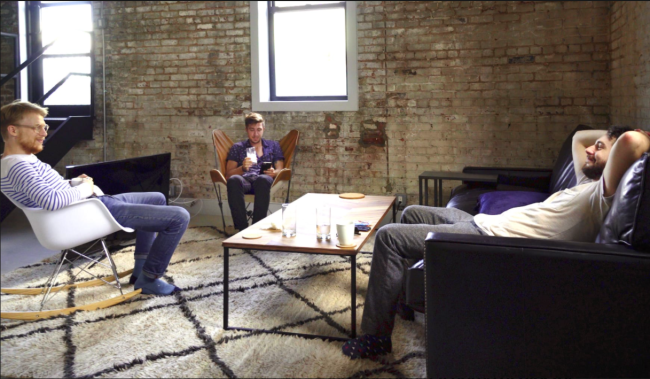How to make your dream of living in NYC a reality

You might have to make some compromises and get some assistance, but it is possible to make New York City your new home.
iStock
Are you one of those people (like millions of others) who has always wanted to live in New York City? And are you also a little confused about how anybody who is not totally loaded can make it happen? (You are not alone in this regard either.)
You may have to hustle, you may have to make some compromises, and it’s unlikely you’ll get to live by yourself, but we’re here to tell you that it can be done. Even better news: We’ll tell you how to do it.
Read on for advice on how to make your dream of living in New York City a reality.
1. Get a roommate (or a few)
It’s a classic strategy as old as time because, well, it works. Pooling your funds with one or more people will enable you to collectively pay New York’s famously high rents, help you qualify for an apartment (a minimum income of 40 times the rent is a common requirement, but that can be a collective figure) and it may even help you get a little bit more space. In addition to the financial benefits, roommates may provide some kind of community, which if you’re new to the city, can be a helpful thing. These are the best sites for finding a roommate in New York City.
2. Consider co-living
Whether or not this new-ish communal-living model is cheaper than finding your own place and living with roommates is up for debate (in some cases, it certainly is not—unless you’re comparing living in a luxury apartment building). However, the barrier for entry is less formidable—you don’t need to have a credit history or a certain score to qualify for co-living (something that can be an issue for non-U.S. citizens) and income requirements tend to be less strict.
Co-living can also ease the transition to life in the big city considerably, removing common tedious/frustrating/annoying aspects of moving to New York such as finding roommates, buying furniture, and setting up accounts for utilities. And, depending on which co-living building you end up in, you might also get a built-in social life with gatherings and outings to attend with fellow residents. Check out our comprehensive guide to co-living options in New York City.
Need help finding the perfect starter apartment in the right neighborhood--or a landlord inclined to be flexible about guarantors, work history, rental history, or "flexing" your space with temporary walls? Place your search into the capable hands of The Agency, a tech-savvy real estate brokerage that's helped hundreds of Brick Underground readers find their ideal NYC apartments. Bonus: The agents at The Agency are not only a delight to deal with, they will charge a broker's fee of 10 percent of a year's rent on open listings instead of the usual 12 to 15 percent if you sign up here.
3. Play the lottery
Yes, you could hope for a Mega Millions payout, but we’re talking about the New York City affordable housing lottery, a program that requires developers to set aside at least 20 percent of apartments in new developments and rent at more affordable rates to gainfully employed low- and middle-income renters. (Buildings get tax abatements as incentives to adopt this pricing structure.) Are the odds against you? Sure. It’s not uncommon for 10,000 people to apply for 100 spots. But, the process itself is not that difficult, and what’s the harm in trying? You can read our guide to applying to the New York City housing lottery.
4. Accept a long commute
Remember the part about compromise? For many people who move to New York City—you'll need to live far from where you work and maybe socialize in exchange for a more affordable rent. So you may work and party in Manhattan or just across the East River in Brooklyn, but if you rent much deeper in Brooklyn, in far reaches of Queens, in the Bronx, or in Staten Island you can save money—and even get an apartment to yourself. How much money would you save? You can find one bedrooms in the Bronx or studios in Queens for around $1,750 a month—good luck finding apartments for that much in prime Manhattan or Brooklyn, where the median rents are around $3,500, and $3,000, respectively.
5. Get someone to co-sign for you
Previously, one of the ways people would get around income requirements would be to pay a big chunk of money upfront in the form of prepaid rent or additional security to landlords to quell any financial concerns. (Cue the call to the wealthy uncle…) However, changes to the rent laws in New York state last year now limit the amount landlords can accept from new tenants (landlords can only ask for a security deposit equivalent to one month's rent, and they can no longer ask for an additional month, or "last month's rent").
Another way to put someone else’s money to work for you is to get them to be a co-signer on the lease, although the requirements for them are restrictive: co-signers need to have a minimum annual income of 80 to 90 times the monthly rent, have good U.S. credit, and in many cases, live in New York or the tri-state area. (Geographic proximity is important in case they are sued for the rent. Gulp.)
6. Use an institutional guarantor
“Many parents do not qualify as co-signers,” says Jeffrey L. Geller, vice chairman and chief operating officer of Insurent, an institutional guarantor (and a Brick Underground sponsor). The requirements for Insurent are a little more manageable: For U.S. citizens, you must have a minimum annual income of 27.5 times the monthly rent or have cash liquid assets/publicly held securities worth a minimum of 50 times the monthly rent. (You should also have decent to good credit.)
Non-U.S. citizens can also work with Insurent even if they do not have an established credit history, and international students can also qualify for Insurent if a “responsible party” (normally a father or mother overseas) has minimum annual income of 50 times the monthly rent in their home country or cash liquid assets/publicly held securities equivalent to a minimum of 80 times the monthly rent in their home country or elsewhere.
You have additional options with the Insurent Lease Guaranty. It’s accepted at over 5,000 buildings and 515,000 apartments in the city. And you may have heard that the New York City rental market moves fast—if you meet the criteria, you can apply online and get an Insurent Qualification Certificate to show brokers and landlords in about 30 minutes.
You Might Also Like






























